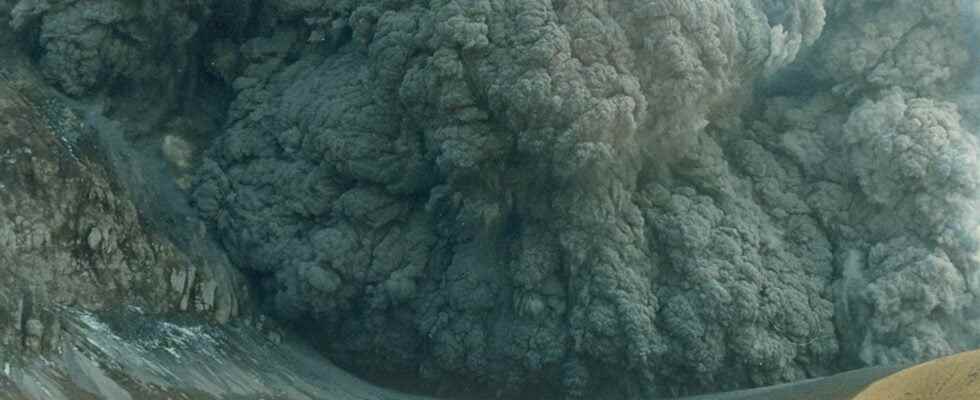The end of the Bronze Age was marked by a catastrophic event that would have strongly impacted humanity. This is the eruption of the Thera volcano, off the Cretan coast. A new study sheds light on the chain of events that may have caused the fall of the Minoan civilization.
You will also be interested
[EN VIDÉO] Interview: the three largest volcanic eruptions in history Volcanologists are constantly confronted with volcanic eruptions. However, some are particularly brutal or intense. Futura-Sciences met Jacques-Marie Bardintzeff, doctor in volcanology, to find out which are the three largest known volcanic eruptions.
Occurring at the end of the Bronze Age, the eruption of volcano Thera, forming the island of Santorini off the Cretan coast, is recognized as one of the natural disasters most devastating known to mankind.
The island of Santorini is located in the eastern part of the Mediterranean, between Crete and the Turkish coast. This is how the entire Mediterranean region would have been impacted by the violence of the eruption, causing numerous earthquake, significant ash fallout, but also several tsunamis. Traces of this eruption were found all over the Globe, even in the polar ice, indicating an impact on a global level and in particular a climate change over several decades. The volcanic deposits are so extensive that they are often used in sedimentary studies as a stratigraphic marker. Some scientists even attribute the fall of the minoan civilization to this catastrophic event.
Yet despite the apparent violence of this event, no human victim had ever been found so far, even in the region most heavily impacted by the eruption. To explain this surprising absence, some scientists believe that the warning signs of the explosion prompted the populations of the nearest areas to flee. It is also possible that the bodies of the victims completely disappeared in the loopholes. fiery clouds who devastated the region, calcining the bodies and leaving no trace of the victims.
The skeletons of a man and a dog found in the debris of an old building
The eruption occurred at the end of the Minoan era, which is contemporary with the XVIIIand Egyptian dynasty (XVIand century BC). At that time, the town of Çeşme-Bağlararası appears to have been an important cultural site on today’s Turkish coast. Paleogeographic reconstructions show that the site was located directly by the sea, less than 100 meters from the shore. A critical geographical situation in the event of a tsunami.
Archaeological research began on the site in 2009 and revealed a level of ash associated with a very chaotic horizon containing reworked sedimentary debris, including the presence of shells and other marine organisms. Typical signs of deposits associated with a tsunami. The site shows the presence of former walls fortification and buildings. It appears that sedimentary deposits are present outside as well as inside old buildings. But the great discovery of the site was that of two skeletons. The bones of a dog were thus found at the entrance to a building, buried under the stones of a collapsed wall. A little further on, the skeleton of a young man has been identified. Its position and the context show that it is in no way a burial and that his death would be directly linked to the occurrence of a tsunami. The way in which the stones of the buildings are scattered is an additional argument in favor of a major event, particularly violent.
Researchers have also found traces of what appears to be relief operations just after the disaster. Many holes penetrating the tsunami deposits have indeed been identified. These rescue and recovery operations could explain the striking absence of other skeletons.
The analyzes made it possible to refine the date of the event, which would have occurred 1,612 years before our era.
Four tsunamis hit the Mediterranean coast in a very short time
Thanks to all the elements found on the Çeşme-Bağlararası site, the scientists were able to reconstruct the chain of events. The results were published in the journal PNAS. The researchers thus propose that the eruption of the Théra volcano caused a series of tsunamis which struck the coast of present-day Turkey, leading in particular to the destruction of the Çeşme-Bağlararası site. Four distinct events could be identified, interspersed with ash deposits. The first tsunami would have been responsible for thecollapse buildings and the death of the young man and the dog. Both waves following would have happened soon after, certainly a few hours apart. The last tsunami would have occurred a few days or even weeks later, after the search for victims. These results show that there were several phases eruptives, interspersed with more or less long breaks during which a rain of ashes fell on the region. After this disaster, everything indicates that the site was abandoned for at least a century.
It is difficult to estimate the impact of this catastrophe on the Minoan civilization and to know if it really was the trigger for its fall. One can however imagine that the destruction of all the port infrastructures, as well as the boats, could have damaged the dynamics and the economic structure of this society so dependent on the sea.
Interested in what you just read?
.
fs3
